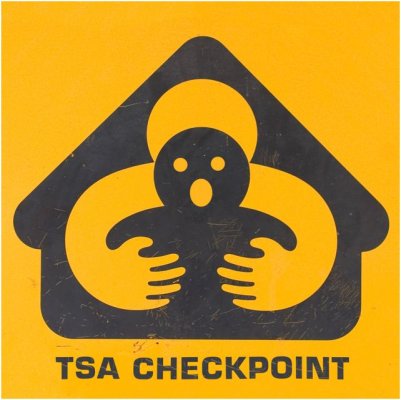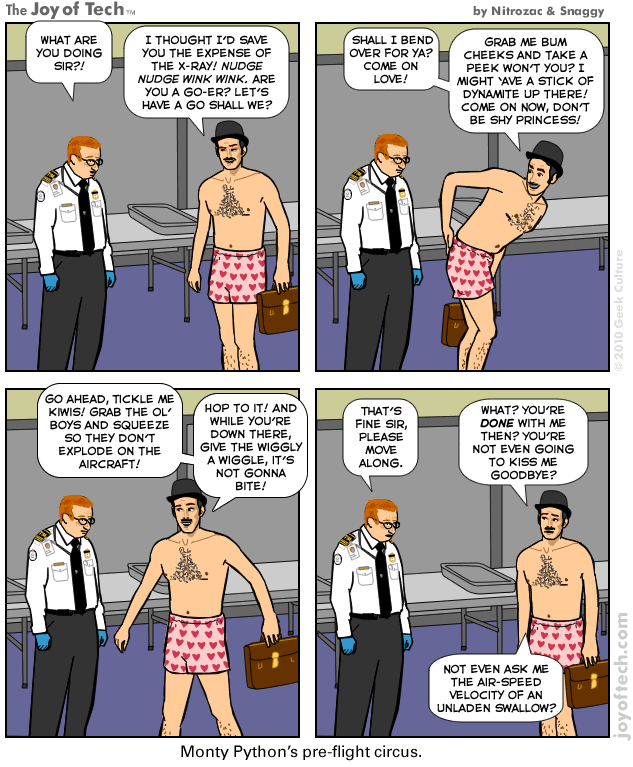The TSA is relying on the innumeracy of the general public.
I totally agree with you.
Let me be clear: I do not think that backscatter scanners are a good idea. I don't think that intimate pat-downs and all the other security theatre is a good idea. I agree with almost all of the sentiments expressed by the majority of the participants in this thread. My views are perfectly captured in
this wonderful piece, which shows how the aviation terrorism problem today is several times less severe than 25 years ago, when we managed pretty well.
My comments about the insignificance of the radiation were a parenthesis. If the negligible amount of radiation involved - and really, it is negligible; if you're worried about radiation, don't get in a jet airliner that's going up to 37,000 feet - actually improved anyone's security, I wouldn't mind it. My point is that the fact that the chances of being killed by terrorists are insignificant, doesn't mean that the chances of being hurt by the radiation cannot also be insignificant.
As you point out, both of those chances are widely estimated as being in the one-in-30-million range, but both have error bars of plus or minus at least an error of magnitude. So you can't compare them in any meaningful way. You can just say "they're both about the same as the risk of spending one minute in a moving automobile" and leave it at that.
Actually, I guess I must have some kind of exhibitionistic tendencies. I go through airport security in my kilt, I don't mind getting felt up as long as it doesn't hurt - and as long as the feeler-upper is prepared for the fact that I don't wear anything under the kilt - and I don't think that I mind people looking at my junk on a scanner (we don't have them here yet). Again, though, that doesn't mean that I don't agree with almost everyone here that these measures are unnecessary, stupid, useless, and demeaning to almost everyone who has more shame (in the "self-respect") sense than me. All of that I agree with. It's just that I don't like seeing poor use of numbers and science being brought into an argument.
Indeed, people who are against these measures should choose their arguments carefully. Otherwise the debate risks going like this:
Person against intrusive scanning: "This is morally wrong, makes me feel uncomfortable, violates the constitution, and exposes me to dangerous radiation".
Government person: "Ah, but here is Professor Frink, a frequent critic of the government incidentally, and he says that the radiation is not dangerous. Isn't that the case, Professor Frink?"
Professor Frink: "Yep. I'd love to be able to say that the radiation is dangerous, but I can't, because my scientific colleagues in countries where this stuff is not a political issue, would laugh at me".
Government person: "So, there you have it. This is totally safe. These people who are against this entirely safe technology are playing with the lives of you, the travelling public. How unreasonable of them."
Voters and newspaper op-ed authors: "What a reasonable argument from the government. Of course we need protecting from terrorists. Let's all assume the position. Just one request, Mr TSA guy: please warm your hands, OK?"
Person against intrusive scanning: "Er... guys? OK, I take the radiation thing back. But you forgot about the moral thing, and the uncomfortable thing, and the constitution thing... guys... hello... anyone there?".
Media: "Sorry, that's all we have time for, we'll be back with hilarious footage of people getting hit in the groin by footballs right after these messages".



